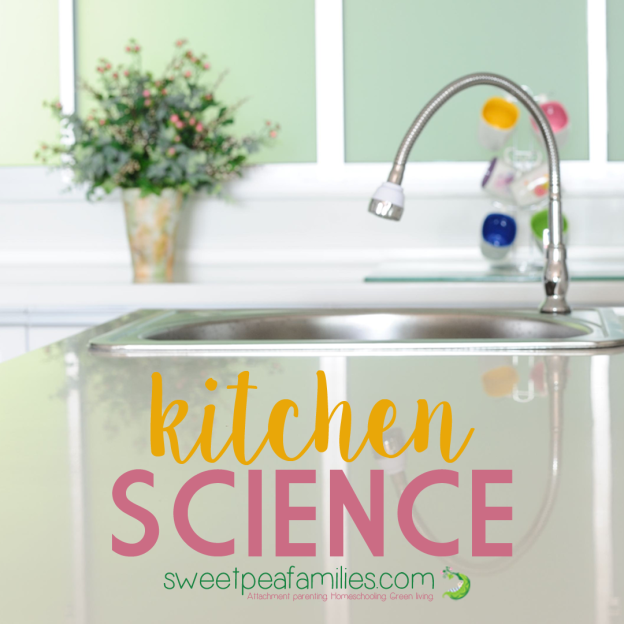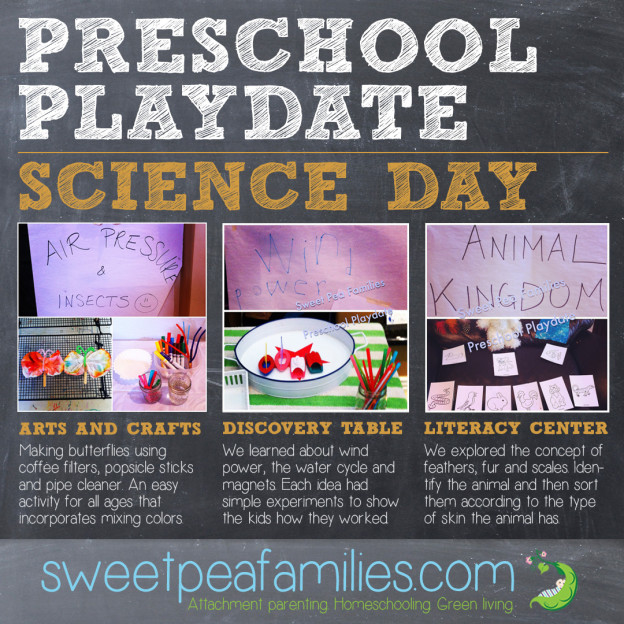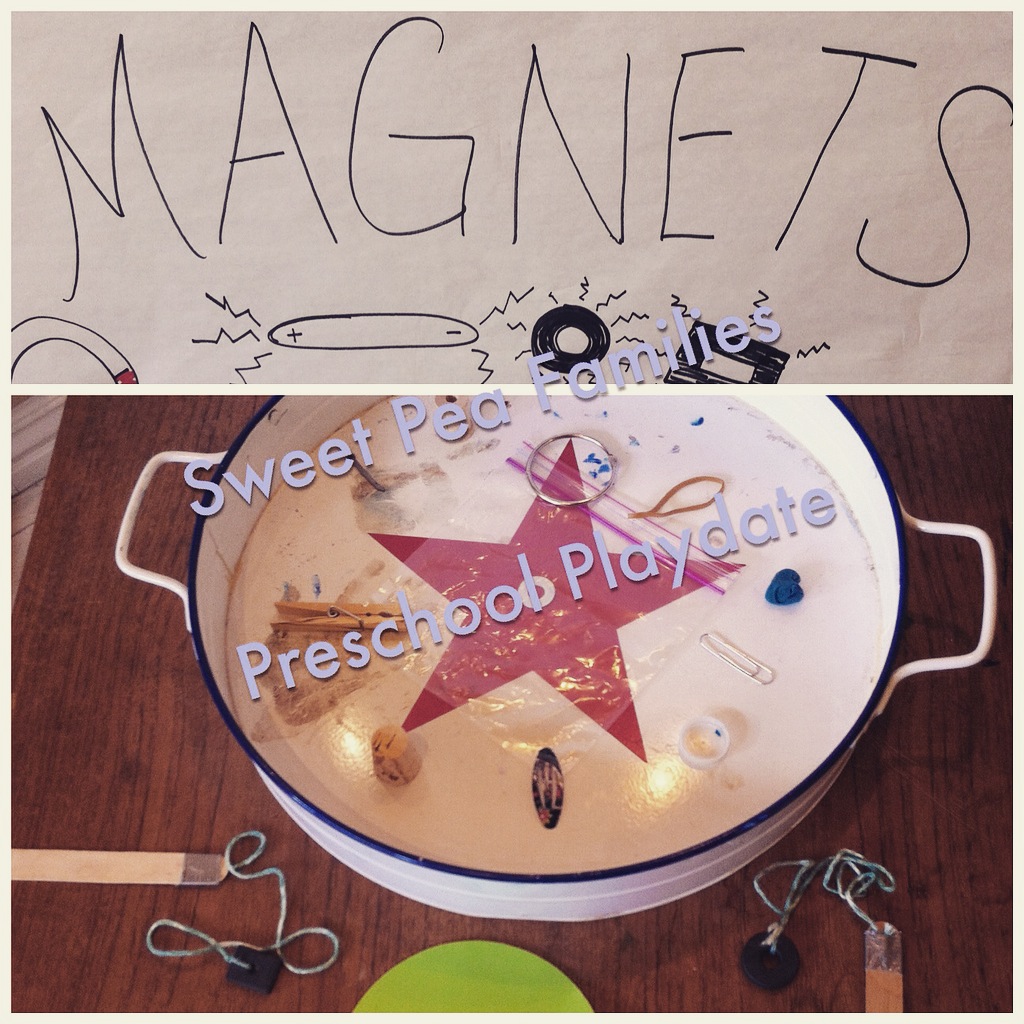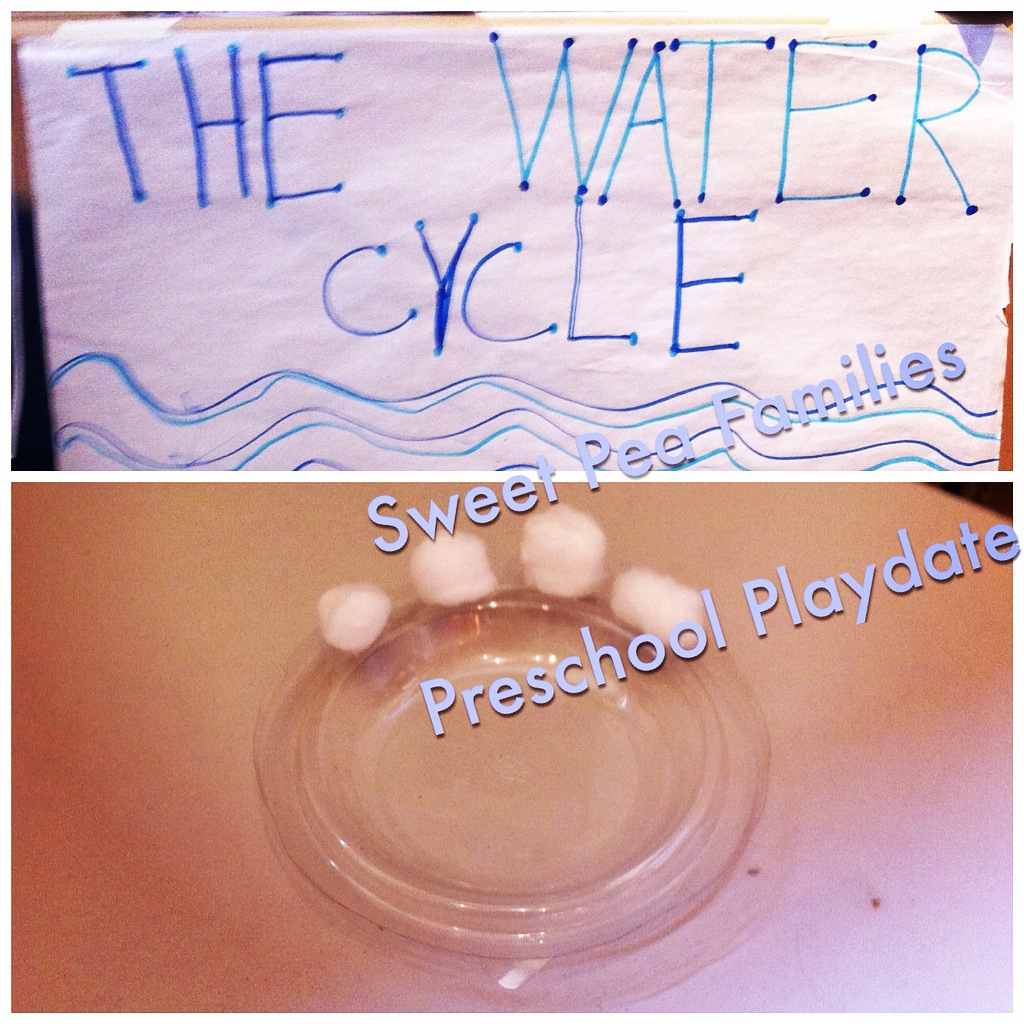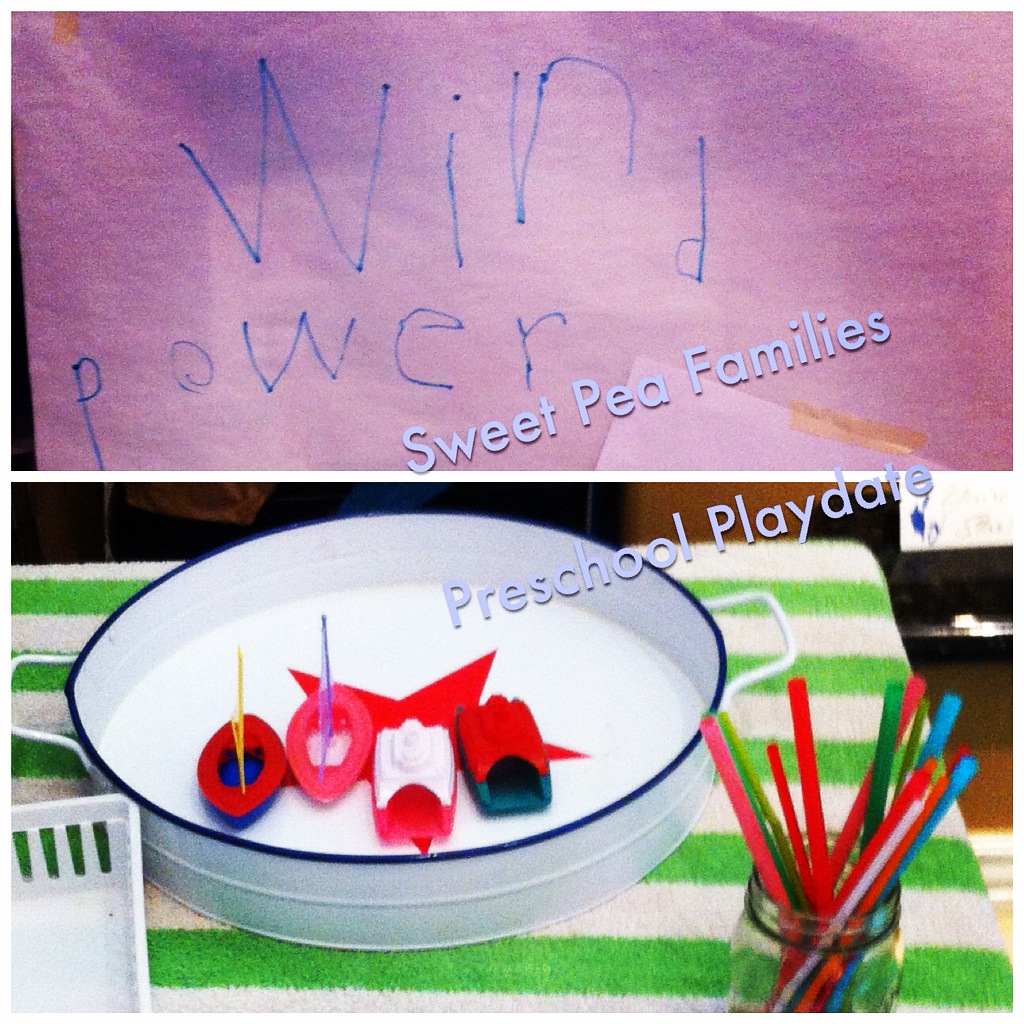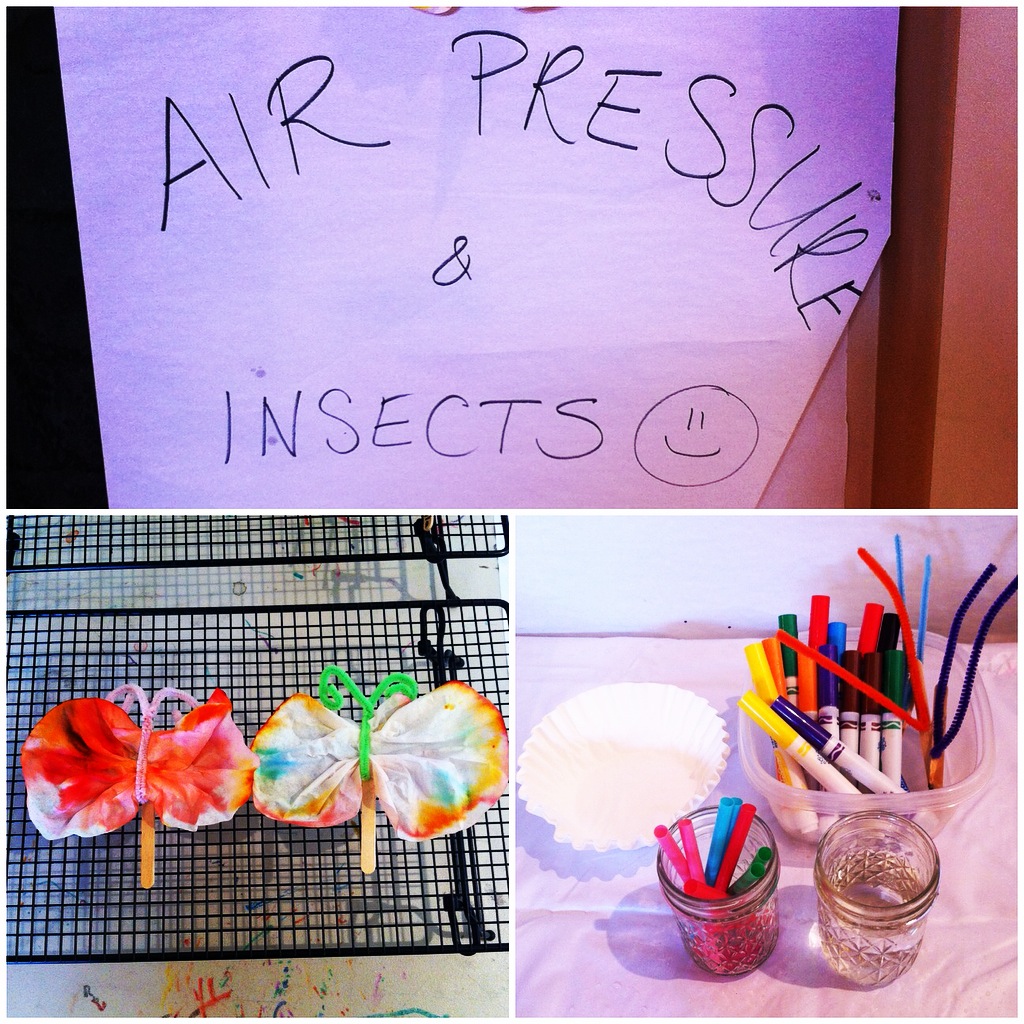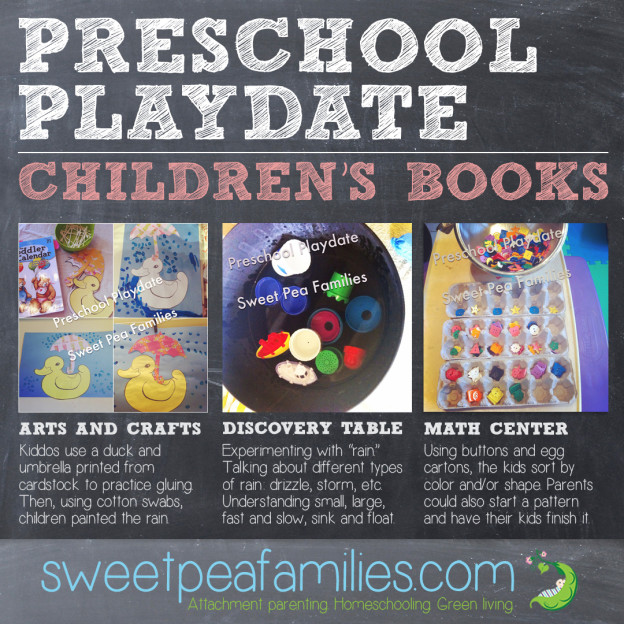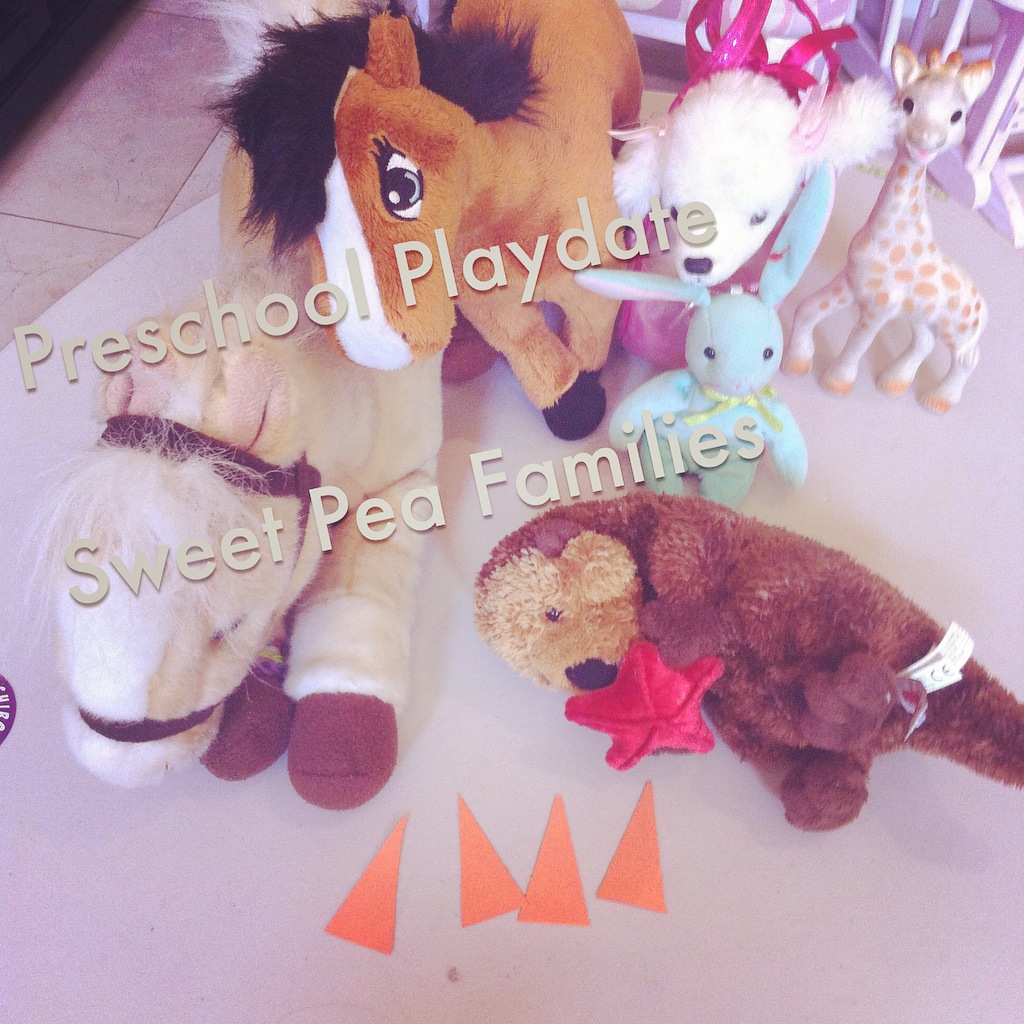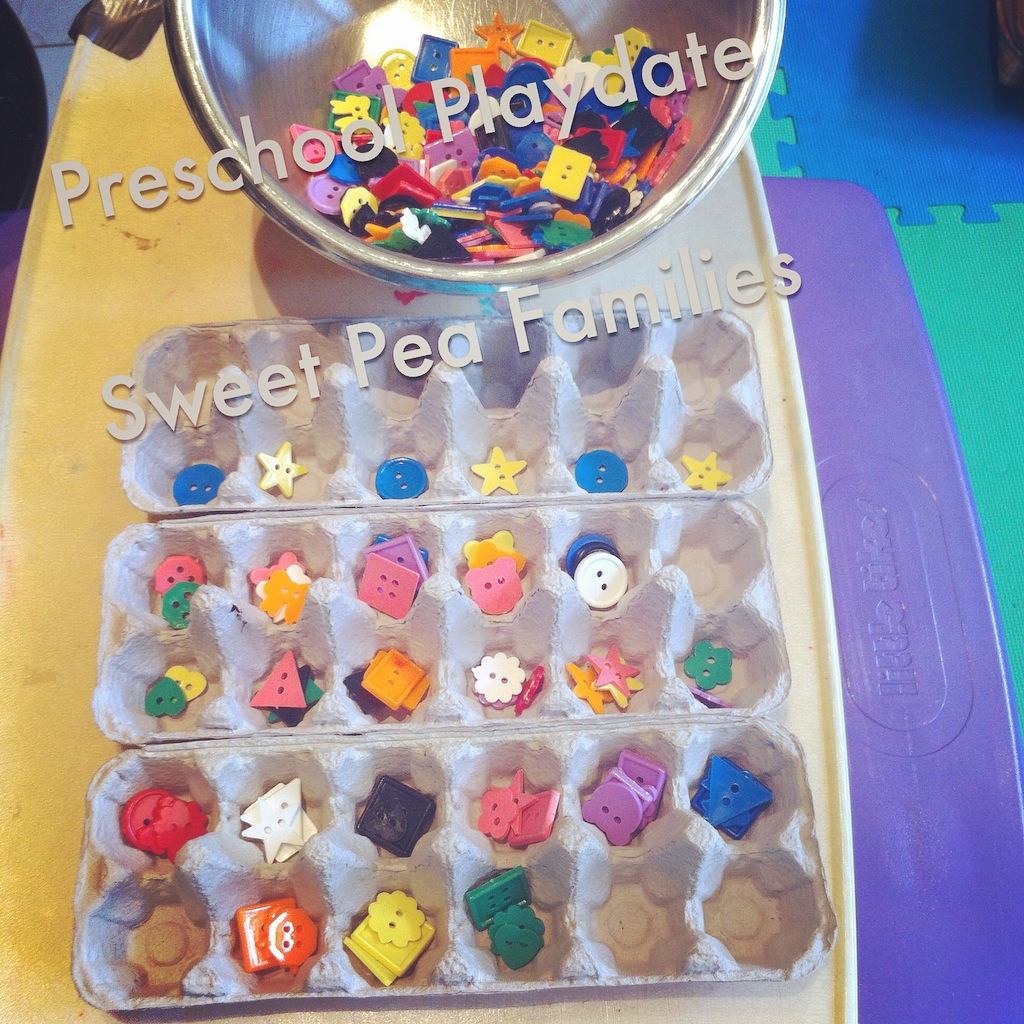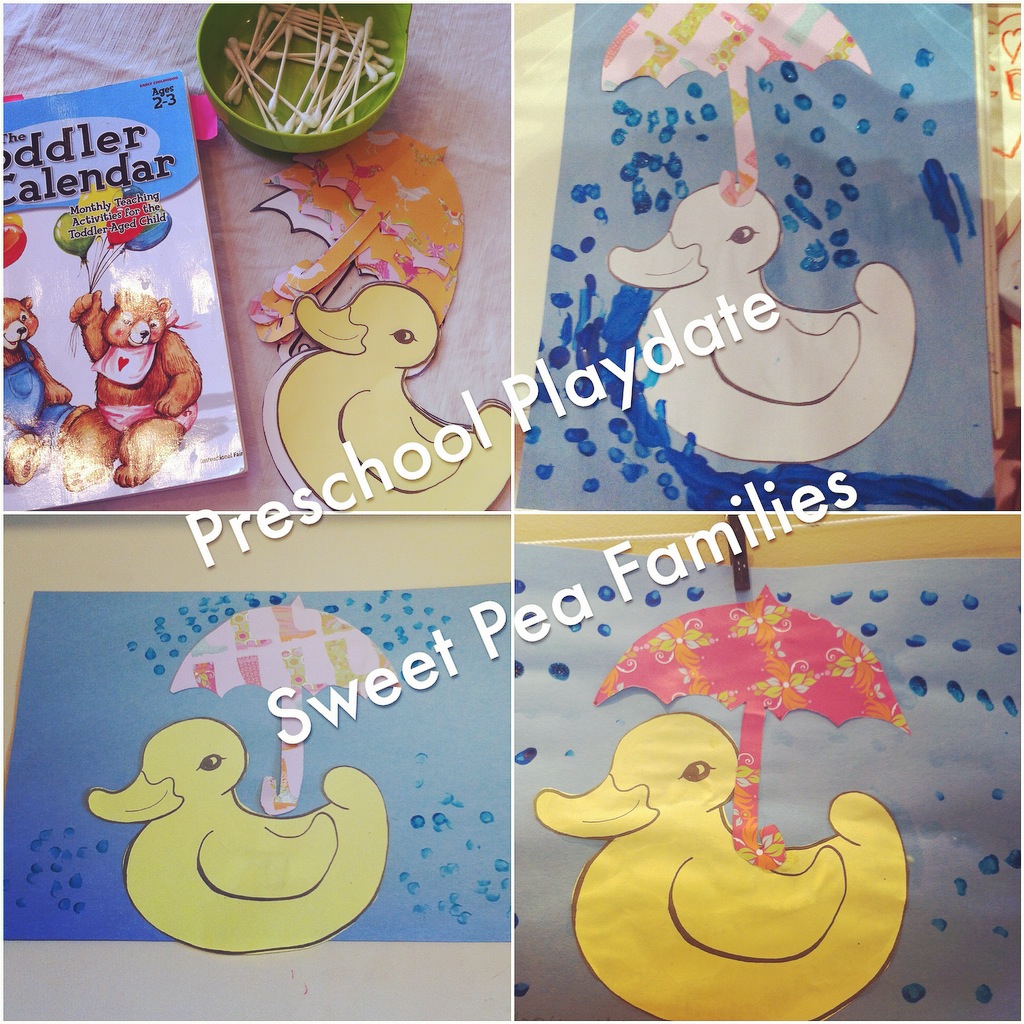Welcome to our new series…Kitchen Science!!
Instead of doing “preschool playdates” with our SPB students, we decided to do park playdates so that more families could feel like they were welcome to join us. The home educator in me has a hard time offering no activity for the children to explore while they share time with us…so I started bringing kitchen science experiments to the park with us.
I am calling this series “Kitchen Science” because most of the activities we will be doing use household items, and all the exploring can be done on your kitchen counter. Join us over the next few weeks as we share the activities we are enjoying with SPB friends of all ages!
The inspiration for all these activities is this book:
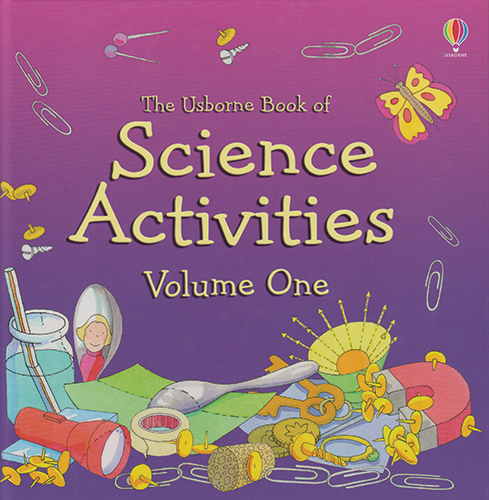
We received it as part of the Sonlight Homeschool Curriculum that we use.
One of the first concepts we teach children about water is “sink” and “float”. We used that vocabulary throughout all the water play.
WHICH ONE FLOATS BEST?
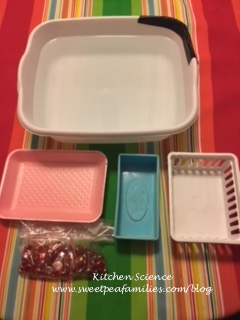
This activity is to help the children explore the idea that some things are going to distribute weight differently than others. When it’s dry, the basket would hold more things…this is what happened when we added water:
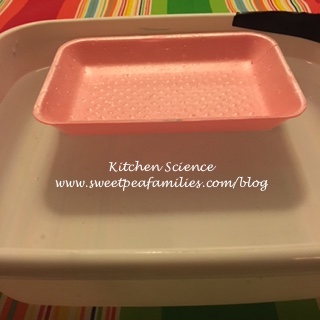
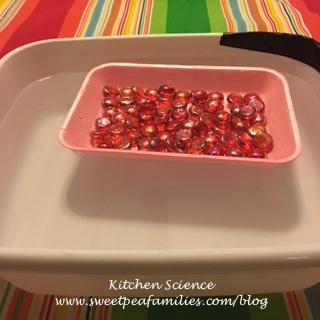
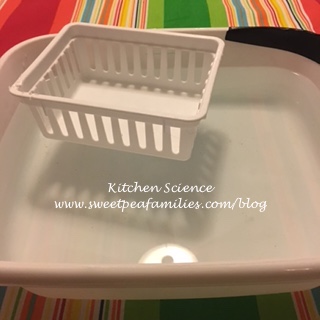
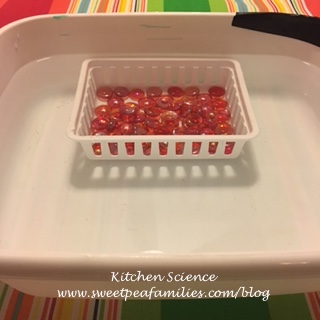
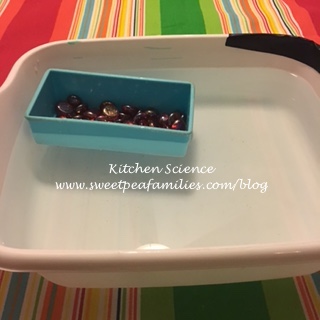
There are lots of ways to add skills to this activity…
Level 1: Gross motor skills ~ place the glass beads in by the handful
Level 2: Fine motor skills ~ place the glass beads one-by-one into the containers
Level 3: Count the beads as they go in
Level 4: Science Journal ~ note how much each container held, and at which point it sunk to the bottom.
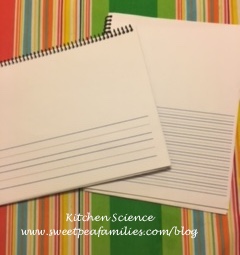
We like these picture journals from Miller Pads and Paper.
The Sweet Peas can draw a picture to remind them of their experiment,
and also write notes or dictate notes to the parent.
You may have noticed the green lines on the side of the tub…we drew those to measure the starting and ending point of the food tray and the blue rectangular container. After we emptied the water, the children could measure the difference between the change of the containers in the water.
BLUE CONTAINER
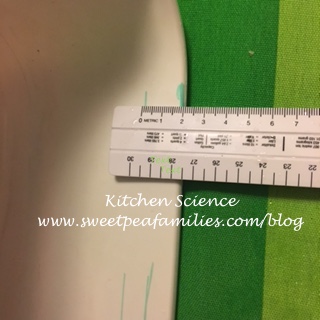
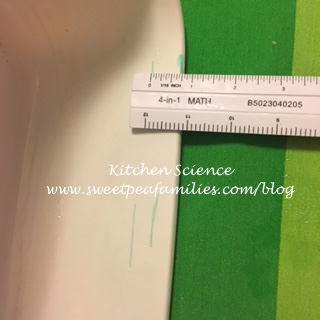
MEAT TRAY
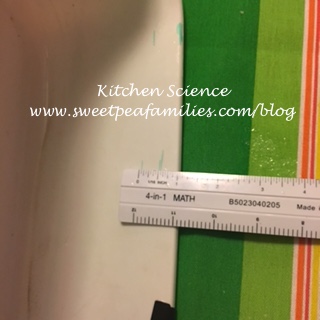
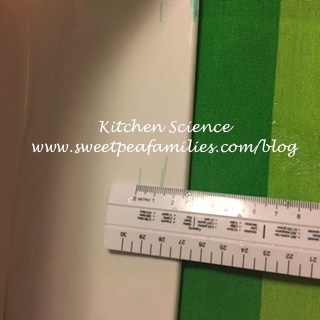
Here is another variation on the theme using two metal containers. I asked the children to guess which one would float. Some said neither since they were both metal…they got a surprise, and also an “aha” moment when we talked about how giant ships made of metal can sail in the ocean.
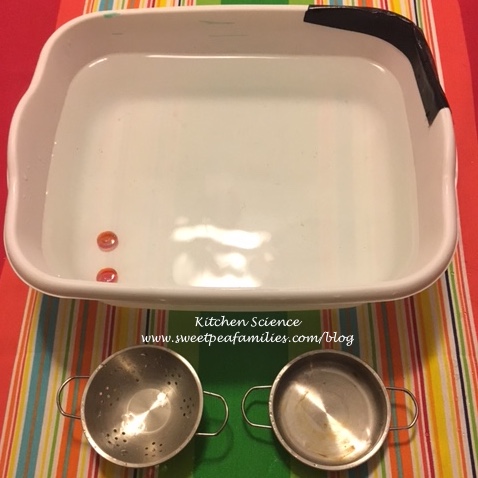
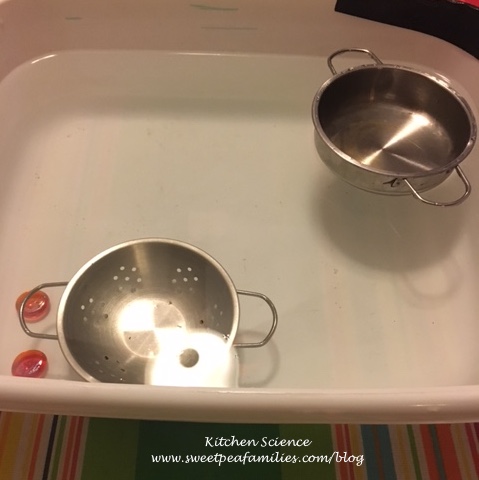
The solid container floated…the enjoyed watching the sieve gurgle bubbles and sink.
You might also fill the solid container with beads to see what it’s sinking point was.
DISTRIBUTION OF WEIGHT
Next we explored what would happen if the cargo on our “ships” was evenly distributed or one-sided. We don’t buy plastic egg cartons so I had to improvise with a cardboard carton and some plastic wrap. For this activity we used 24 glass beads.
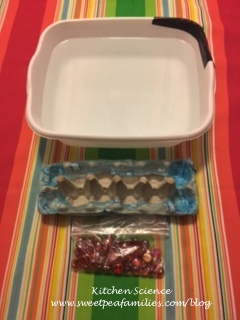
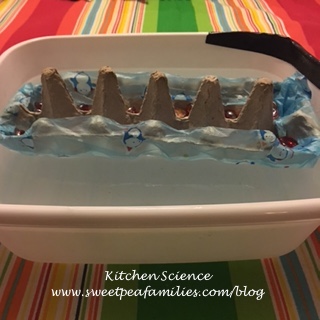
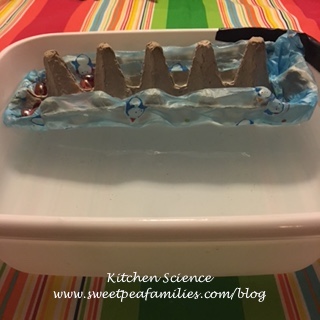
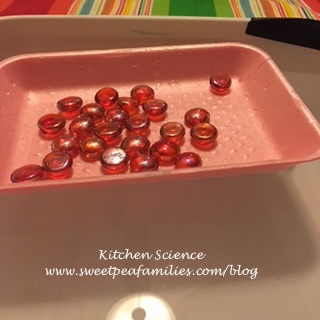
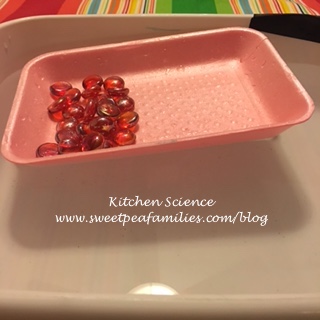
For comparison on this activity, you could draw lines to measure the change in angle of the containers, and then measure the angles with a protractor after the water was drained.
AIR PRESSURE
Blowing bubbles!! This activity demonstrated what would happen if you forced air into a submerged container. I added two glass beads to our container to better demonstrate the effect of air on an objects ability to sink or float.
We connected this experiment back to the metal containers that float. Showing how air adds buoyancy to an object, we talked about how ships and submarines use ballast to sink or float in the water.
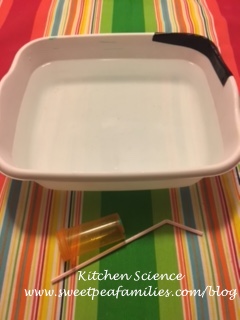
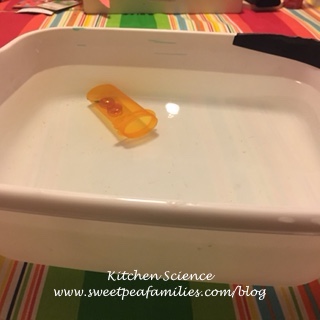
So those are three experiments you can do at home with household objects…I would love to hear how your Sweet Pea enjoyed them!

